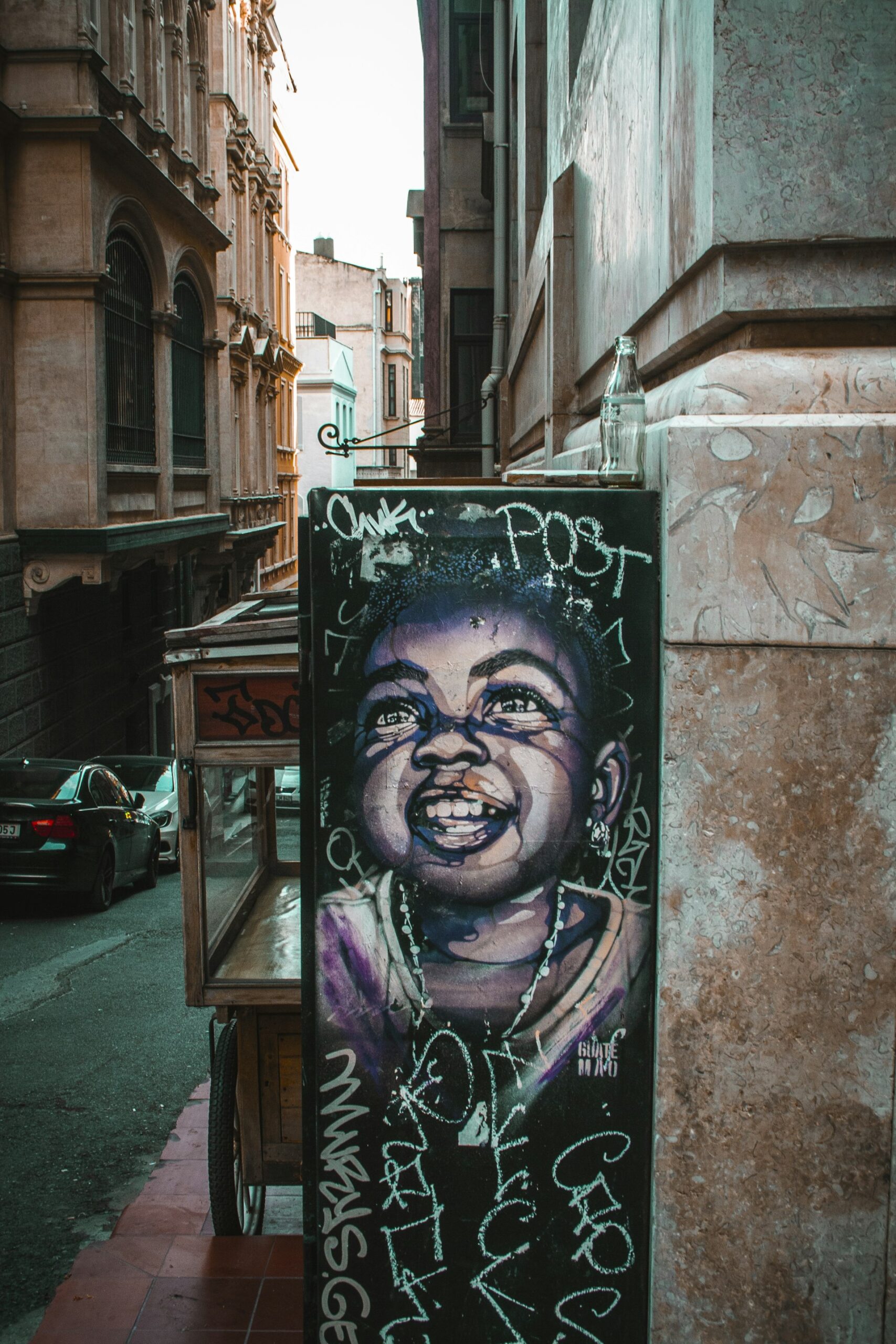Navigating Art in the Era of Digital Consumerism: Innovation, Opportunity, and Authenticity

Photo by 烧ä¸é…¥åœ¨ä¸Šæµ· è€çš„ on Unsplash
Introduction: Art’s Digital Transformation
In the 21st century, the relationship between art and its audience is undergoing a profound shift due to digital consumerism. Rapid advancements in technology, the emergence of new digital marketplaces, and evolving consumer expectations are redefining how art is created, distributed, and experienced. This article explores the implications of digital consumerism for artists, collectors, and enthusiasts, offering practical guidance for navigating this dynamic landscape.
1. Digital Art Creation: Tools and Opportunities
Digital consumerism has democratized access to artistic tools and platforms, empowering creators of all backgrounds to experiment and innovate. Technologies such as artificial intelligence (AI), virtual reality (VR), and augmented reality (AR) have expanded creative possibilities. For example, immersive art installations powered by Unreal Engine 5 are allowing artists to build interactive 3D environments, blurring the boundaries between physical and virtual worlds. Renowned digital artists, including Refik Anadol, have showcased large-scale immersive works, engaging global audiences in new ways [1] .
AI, once seen as a novelty, is now a vital creative partner. Major brands like Nike have integrated AI into their design process, enabling personalized product offerings based on consumer data and trends. Artists are collaborating with AI to generate unique visual concepts, pushing the boundaries of traditional art forms and challenging the notion of authorship [1] . For those interested in exploring AI-assisted creation, widely available platforms such as Adobe Creative Cloud and open-source tools like RunwayML can be excellent starting points. You may find community tutorials and resources by searching for “AI art creation platforms” or participating in online forums dedicated to digital art.
2. Digital Art Markets: Distribution and Consumer Access
The art market is experiencing dramatic change as digital sales platforms and online galleries become primary venues for buying and selling art. According to industry research, digital art sales are expected to grow by 25% annually, driven by the expanding reach of online platforms [2] . NFTs (Non-Fungible Tokens) have become especially influential, offering artists new revenue streams and collectors confidence in authenticity and ownership [3] .
For artists seeking to sell their work, prominent NFT marketplaces such as OpenSea, Foundation, and Rarible have established themselves as reputable platforms. Before listing art, creators should carefully review each platform’s terms to understand fees, copyright implications, and promotional opportunities. Collectors and enthusiasts interested in purchasing digital art can browse these marketplaces or attend virtual exhibitions hosted by leading galleries, many of which now offer VR or AR-enhanced viewing experiences. It is advisable to verify platform legitimacy by researching recent reviews and ensuring the site uses secure payment methods.
Beyond NFTs, traditional galleries are increasingly focusing on digital channels. Research shows that 43% of galleries plan to prioritize online sales, with more than half developing robust online content strategies to reach new audiences [4] . If you are an emerging artist or gallery, consider building a digital presence through established platforms like Artsy, Saatchi Art, or by cultivating a following on social media networks such as Instagram and TikTok.
3. Authenticity, Ownership, and Transparency Challenges
The digital transformation of art markets brings new challenges, particularly regarding authenticity, provenance, and intellectual property. Studies indicate that up to 70% of digital art buyers are concerned about unclear ownership and authentication [2] . Blockchain technology, which underpins NFTs, offers a partial solution by enabling transparent, tamper-proof records of ownership. However, not all platforms provide the same level of security, and disputes over copyright and digital rights persist.

Photo by redcharlie on Unsplash
To safeguard your interests as an artist or collector, consider the following steps:
- Research the platform’s approach to authentication and provenance before buying or selling art.
- Consult with legal professionals specializing in digital intellectual property law for complex transactions.
- When possible, use platforms that offer blockchain-based verification of ownership and history.
If you are uncertain about a platform’s legitimacy, search for the company’s name along with keywords like “reviews” or “scam” to uncover user experiences. For legal advice, you may contact professional associations such as the Volunteer Lawyers for the Arts or search for intellectual property attorneys in your jurisdiction.
4. The Democratization of Art and Emerging Voices
Digital consumerism is breaking down barriers to entry, enabling diverse artistic voices to reach global audiences. Social media and online galleries have amplified exposure for emerging artists, while collectors are increasingly motivated by social, political, and environmental themes [3] . This democratization fosters innovation, cultural exchange, and richer dialogues within the art world.
To promote your art or discover new talent, consider engaging with online communities, participating in digital exhibitions, and leveraging crowdfunding platforms such as Kickstarter or Patreon. These services often require account setup and may have eligibility criteria, so review their guidelines before submitting projects. Participation in online group shows or collaborations can expand your network and open new opportunities.
5. Practical Steps for Artists, Collectors, and Enthusiasts
Navigating the digital art landscape requires adaptability and informed decision-making. Below are practical steps for each audience:
For Artists:
- Familiarize yourself with popular digital creation tools and experiment with new mediums.
- Research reputable online marketplaces and galleries for showcasing your work.
- Prioritize transparency in your pricing, edition numbers, and copyright terms.
- Engage with your audience through social media, virtual events, and interactive installations.
- Stay informed about emerging technologies and regulatory changes in digital art commerce.
For Collectors:
- Vet the authenticity and provenance of digital works before purchase.
- Use secure, well-established platforms for transactions, and consult experts as needed.
- Explore digital exhibitions and participate in online auctions for access to a wider array of art.
- Consider supporting emerging artists whose work aligns with your values and interests.
For Enthusiasts:
- Attend virtual exhibitions and art fairs to experience new forms of art from home.
- Participate in online art communities to learn, share, and connect with creators.
- Support artists through direct purchases, crowdfunding, or by sharing their work online.
6. Overcoming Challenges and Ensuring Ethical Engagement
While digital consumerism brings unprecedented opportunities, it also raises ethical concerns around environmental impact, equity, and fair compensation. The energy consumption of some blockchain technologies has been criticized, though more sustainable approaches are emerging. Additionally, artists and buyers should be aware of the risks associated with copyright infringement and unauthorized reproductions.
To engage responsibly, consider the following:
- Support platforms and artists committed to sustainable practices, such as using eco-friendly NFTs.
- Respect copyright and intellectual property rights when sharing or reproducing digital works.
- Advocate for greater transparency and ethical standards in online art markets.
For up-to-date information on environmental and legal standards in digital art, consult organizations such as the Artsy editorial team, or search for “sustainable NFT platforms” and “digital art law resources” for further reading.
Conclusion: Embracing the Digital Future
Art in the age of digital consumerism is defined by innovation, accessibility, and evolving values. By understanding the technologies, challenges, and ethical considerations shaping today’s art world, artists, collectors, and enthusiasts can make informed decisions and contribute to a more vibrant, inclusive, and sustainable creative ecosystem.



